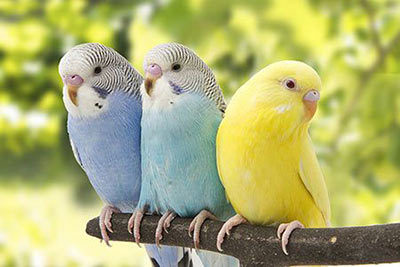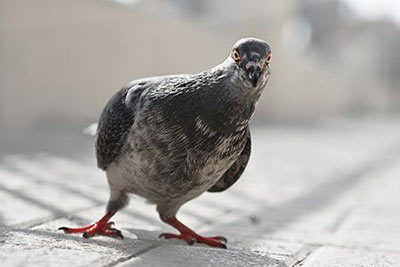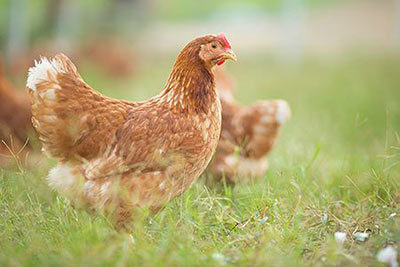Hornbill
Hornbill Facts
| Size | 12-40 in (30-100 cm) |
| Speed | Unknown |
| Weight | 0.2-14 lb (102-6,200 g) |
| Lifespan | 35-40 years |
| Food | Fruits, insects, small animals |
| Predators | Birds of prey |
| Habitat | Philippines, India, Africa, China, Southeast Asia |
| Order | Bucerotiformes |
| Family | Bucerotidae |
| Scientific name | Bucerotidae |
| Characteristics | Large bill with a casque |
Main Characteristics
The hornbill is a tropical bird. Its most distinctive characteristic is its bill. On its top there is a huge helmetlike bony extension.
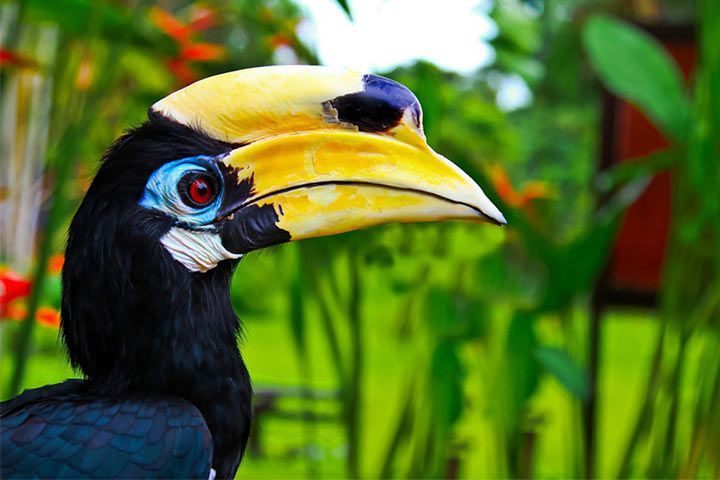
Anatomy and Appearance
Size and Weight
There are 50 hornbill species in many different sizes. They can be as small as a pigeon, but also have a wing span of up to 6 feet (1.8 meters). The largest and heaviest hornbill is the southern ground hornbill with a size up to 40 inches (100 cm) and a weight of 14 pounds (6.2 kg). The smallest species is the red-billed dwarf hornbill with a size of up to 12 inches (30 cm) and a weight of 3.6 ounces (102 grams).
Bill
The most distinctive feature of the hornbill is its bill, which has a kind of huge “attachment”. You might think such a large bill would have to weigh a few pounds, but it is really very light. It consists of a sponge-like bony structure with a hollow centre and thus mainly contains air. It is said that the hornbill can make its call deeper and more resonant with it. Maybe he uses it as air conditioning system - similar to the toucan.
Eyelashes
The eyelashes of the hornbill are modified feathers.
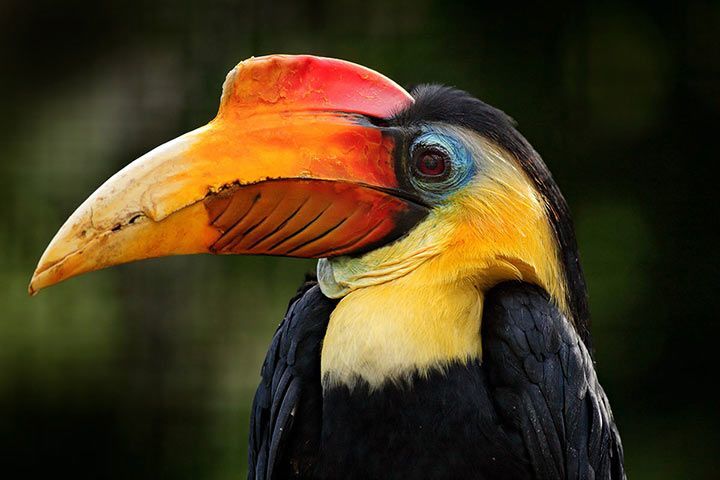
Diet
Some of Them Love Fruits
Some hornbills put away up to 150 figs per meal. Until today, nobody ever has watched a hornbill drink. It compensates its fluid requirements with the juice from fruits.
And Some of Them Hate Fruits
The northern and southern ground hornbill are unique among the hornbills. Contrary to the other species, they are primarily carnivores and feed on mice, rodents, frogs and even poisonous snakes. Most of the time, they live on the ground in small groups of up to twelve animals.
Behavior
Why Do Hornbills Have Large Bills?
Hornbills use the tip of their bills like fingers to pick fruits from trees or grab little animals from the ground. The edges of the bill are serrated like a saw. So the birds can hold things with it and cut them up.
Senses and Abilities
Sounds
Hornbills are loud. It is said that you can hear the flapping of the wings of a hornbill 0.5 miles (800 meters) away.
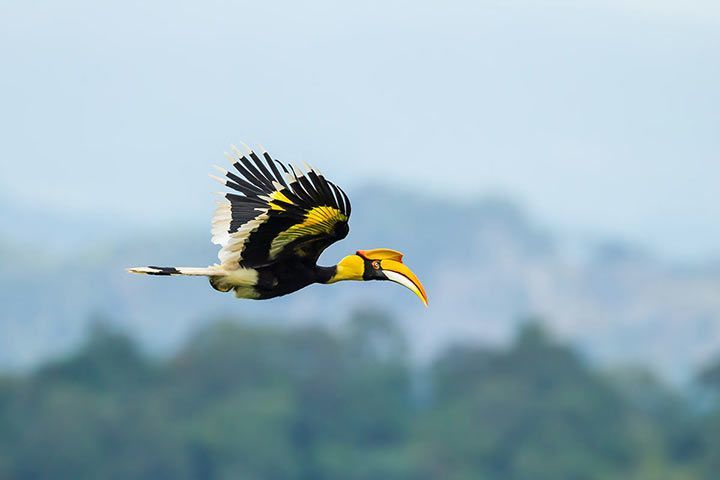
Reproduction
Nesting in Hollow Trees
Hornbills are famous for their nesting habits. After mating, the female hornbill looks for a hollow tree and closes the entrance to the cavity with dung and mud, which is provided by the male bird. Thus, enemies have no chance to grab the eggs. Of course, the male hornbill also supplies its partner with food, which it passes through a little peephole. Although the female hornbill is locked into the cavity during the time of breeding, it keeps the nest clean and simply throws the dirt out through the little loophole.
Caring Parents
Female hornbills stay in the cavity with their offspring for 6-8 weeks (sometimes up to 4 months). Sometimes they lose their plumage during that time and are unable to fly for a few weeks. Hornbill mums of other species open the entrance as soon as the young birds have developed their first plumage. The kids then close the cavity again themselves and are fed by their parents until they are strong enough. This way of nesting is quite exhausting – hornbill mums sometimes even die from the strain.

Enemies and Threats
The bill of the helmeted hornbill is different to others: Its tissue is much denser, almost like ebony, and makes up about 10% of its body weight. Unfortunately, these bills are very popular with local people as a resource for handicrafts.
Fun Facts
Hornbills Use Make Up
Yes, that's right. A gland is located at the root of their tail feathers. It produces a substance which is responsible for the yellow-red and orange color of the bill.















